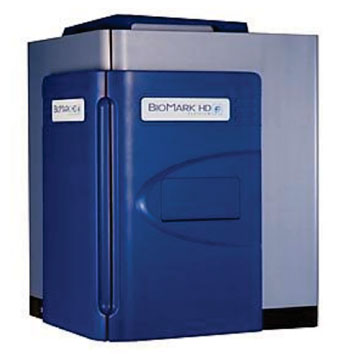Molecular Methods Differentiate E. coli Outbreaks
By LabMedica International staff writers
Posted on 09 Dec 2015
The public health importance of Shiga toxin-producing Escherichia coli (STEC) infections, epidemiological and molecular surveillance systems are essential for early outbreak detection and in recent years, rapid advancements in the use of molecular typing methods have improved STEC surveillance and outbreak detection.Posted on 09 Dec 2015
The application of these tools helps to identify disease clusters, refine outbreak case definitions, facilitate case finding, and link human cases to environmental sources. In order to achieve these outcomes, molecular typing assays must possess the discriminatory power required to distinguish between related and nonrelated bacterial isolates, have high reproducibility, and be easy to perform.

Image: BioMark HD Real Time Polymerase Chain Reaction System (Photo courtesy of Fluidigm).
A team of scientists led by those at the Alberta Provincial Laboratory for Public Health (Calgary, AB, Canada) assessed the capacity of either high-throughput polymerase chain reaction (PCR) of 49 virulence genes, core-genome single nt variants (SNVs) or k-mer clustering to discriminate between outbreak-associated and sporadic E. coli O157:H7 isolates. Three outbreaks and multiple sporadic isolates from the province of Alberta (Canada) were included in the study. Two of the outbreaks occurred concurrently in 2014 and one occurred in 2012.
The BioMark real-time PCR system (Fluidigm; South San Francisco, CA, USA) was used for real-time PCR amplification of 49 genetic markers using 48.48 dynamic arrays. Amplifications were performed using the dyes, 6-carboxyfluorescein (FAM)- and 6-carboxy-2’, 4, 4’, 5’, 7, 7’-hexachlorofluorescein succinimidyl ester (HEX)-labelled TaqMan probes. All amplification assays included both positive and negative controls. Detection of Stx genes, stx1 and stx2 was determined using a real-time multiplex PCR assay consisting of two separate reactions run on the ABI Prism 7500FAST Sequence Detection System (Life Technologies, Inc.; Burlington, ON, Canada).
Pulsed-field gel electrophoresis (PFGE) and multilocus variable-number tandem repeat analysis (MLVA) were employed as comparator typing methods. The virulence gene profiles of isolates from the 2012 and 2014 Alberta outbreak events and contemporary sporadic isolates were mostly identical; therefore the set of virulence genes chosen in the study were not discriminatory enough to distinguish between outbreak clusters. Concordant with PFGE and MLVA results, core genome single-nucleotide variations (SNV) and k-mer phylogenies clustered isolates from the 2012 and 2014 outbreaks as distinct events. The k-mer phylogenies demonstrated increased discriminatory power compared with core SNV phylogenies.
The authors concluded that whole genome sequencing (WGS) holds significant potential to replace current gold-standard typing methods such as PFGE for the routine surveillance and detection of enteric outbreaks. This shift will be driven by the advantages offered by WGS such as increased discriminatory power and genetic resolution. The study was published on November 26, 2015, in the journal Eurosurveillance.
Related Links:
Alberta Provincial Laboratory for Public Health
Fluidigm
Life Technologies, Inc.














